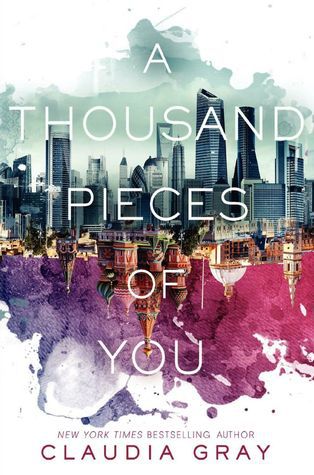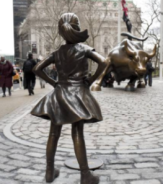Boy Meets Girl by Meg Cabot, released in 2004
Description:
Meet Kate Mackenzie. She:
– works for the T.O.D. (short for Tyrannical Office Despot, also known as Amy Jenkins, Director of the Human Resources Division at the New York Journal)
– is sleeping on the couch because her boyfriend of ten years refuses to commit
– can’t find an affordable studio apartment anywhere in New York City
– thinks things can’t get any worse.
They can. Because:
– the T.O.D. is making her fire the most popular employee in the paper’s senior staff dining room
– that employee is now suing Kate for wrongful termination, and
– now Kate has to give a deposition in front of Mitch Hertzog, the scion of one of Manhattan’s wealthiest law families, who embraces everything Kate most despises … but also happens to have a nice smile and a killer bod.
The last thing anybody — least of all Kate Mackenzie — expects to find in a legal arbitration is love. But that’s the kind of thing that can happen when… Boy meets girl.
Review:
This is my first review as a part of Chooseday Tuesday, where you choose the book I read and review the following week. I was definitely excited that Boy Meets Girl was the first pick, because Meg Cabot is one of my favourite authors. She brilliantly mixes humour and romance, and her “Boy” series uses mixed-media to present the storyline, making the novel even more fast-paced and easy to read. Let’s jump into my thoughts on the book and warning, there will be SPOILERS.
First off, this is the story of Kate Mackenzie, a woman in her mid-twenties who works in human resources because she wants to make a difference, and this job suits her purpose (like, it pays the bills, and her best friend works there, so why not). She recently broke up with her ten-year boyfriend, Dale, because he can’t commit, except he’s committing just fine to stalking her everywhere she goes, begging her to take him back. And now, her much-despised boss has demanded she fire a beloved dessert-cart woman, Ida, which leads to the main plotline: a breach of contract suit that introduces our love interest, Mitch.
Kate is a great romance protagonist. She sticks to her resolves when it comes to dumping Dale, so there’s no whining and “maybe I should, maybe I shouldn’t, was it my fault all along?” Of course, women are no less strong because they doubt themselves after a break up, but too many books focus on the woman running back to the shady ex BEFORE meeting a hotter guy and moving on. Thankfully, Boy Meets Girl doesn’t fall into this trap.
Um, Mitch is fully swoon-worthy? I am not a huge romance reader because I become massively picky about the love interest. But Mitch passes this test. Cabot spends some time throwing in comments on his (attractive) physical description, but *really* fleshes out his personality, which I need in a romance! I need to love a man’s personality if I’m going to cheer on my ship! And Mitch is a good, kind dude with some serious passions for others’ well-being. (And a serious sarcastic side, haha.)
The novel doesn’t flake when it comes to supporting characters, either. Kate’s best friend Jen is supportive and hella sneaky (which comes into play during the end scenes). Also, she has a massive bad-ass side? I love their friendship, and how much the two play off each other throughout the book. We also have Dolly Vargas, popping back up from “Boy” #1, and a few features from other workers at the company newspaper.
The book also has its villains: Mitch’s brother Stuart, and Kate’s boss, Amy. They are truly unlikeable. Several times I found myself shaking my head at the book. The pair discriminate against minorities, such as the Jewish people and lesbians, because they are not “socially acceptable.” This discrimination is not completely open: you can see this in one of Amy’s emails to a friend, where she shades Stuart for his newly-discovered Jewish heritage, but simultaneously assures Stuart she doesn’t care. The pair care more about what everyone else thinks than engaging in any real self-reflection. Several times in the novel people tell them their behaviour is not acceptable (directly and indirectly) but they take it more as a personal attack. The frustrating thing is these are attitudes we see in the real world. I applaud Cabot for integrating them into her book, particularly when this is humour and many might shy from greater social causes in a humour novel.
However, because this is humour, I also find Cabot might not have fully dealt with Amy and Stuart’s behaviour. At the end of the book, there is no admission of guilt from either party, to any end. In fact, you could consider the pair “winners.” {{Complete spoiler, but Stuart maintains control of his father’s law firm (in fact, Mitch leaves, so now Stuart doesn’t even have to share partnership with his brother) and while Amy loses her job, people are already headhunting her. So what lesson have these two learned from their bigotry?}} If you have read the book, let me know your thoughts on this. If you haven’t, I don’t think this is a deal breaker, but it certainly is something worth noticing. The pair are not only discriminatory, but they do something seriously despicable at one point, and yet they seem unaffected by the end of the novel? Hmm.
Another point I would bring up is Sean/Janice. Here we have Mitch’s youngest sister. She is nineteen, and the black sheep of the family (if Mitch hasn’t already claimed the role). Margaret, the matriarch of the family, is at her wit’s end with Sean/Janice because the young woman has (1) dyed her hair green and (2) done something suspicious at school that “made” Margaret pull her out. Until close to the end of the book, we don’t know what it is. Now, the first thing I want to mention is the girl’s name. She insists on being called “Sean,” but throughout the book, characters flip between using Janice and Sean. When anyone starts going by a different name, it can be a slow transition, so the author might be trying to represent this? But mostly as a reader, it can become confusing: does it mean the character using only “Janice” is denying her identity? Does it mean the character switching between the two doesn’t take it seriously? It was hard to tell at several points. The second thing I want to mention is that Sean was often treated as a burden to others. This is a bit tricky for me. In one part of the book, Sean shows up at Mitch’s, but he doesn’t want her there because he’s about to get lucky (if you know what I mean) so he begs his sister to take her, but his sister doesn’t want her, and his sister is like, ugh, fine, so she promises her husband sexual favours if her husband will let Sean stay with them. Now. Sean is going through a really rough time. And the two people who support her them most in the book (Mitch and her sister, Stacy) don’t even really want her around? I’m not saying Mitch and Stacy don’t like Sean, but it’s tough for me to see how a book decides to tackle the issues Sean is dealing with, but also represent her as (basically) a burden and unwanted. All does end well with her, but not because her immediate family comes to her rescue. Just some thoughts.
So this is it from me! Is Boy Meets Girl worth your time? I would say yes. My main complaints had more to do with how the novel tied up two of its side plots (Sean and Amy/Stuart), neither of which grossly affect the heart of the novel. Certainly worth noting though, as I do think minority issues should not simply be thrown in for shits and giggles.
If you’re looking for a laugh-inducing romance, I would recommend this (and the rest of Cabot’s “Boy” series, which I have read) in a heartbeat. The book is told through email, journal entries and IM, which makes it such a fast read that you’re literally jumping from one laugh to the next. Also, if you like this, you might enjoy “My (not so) Perfect Life” by Sophie Kinsella. Four crowns to Boy Meets Girl from me, and no princess because that is reserved for the one and only Book Princess Mandy.






